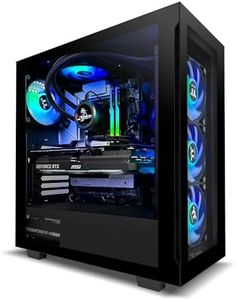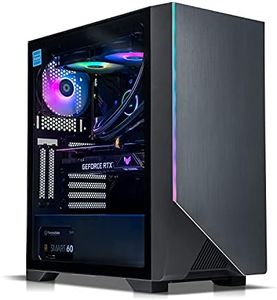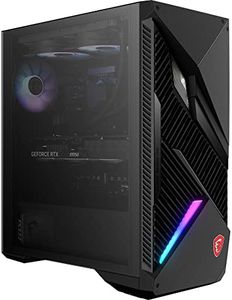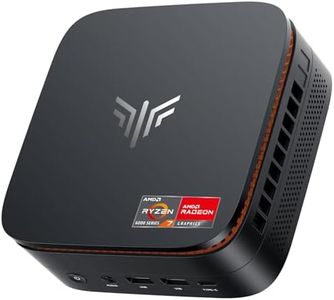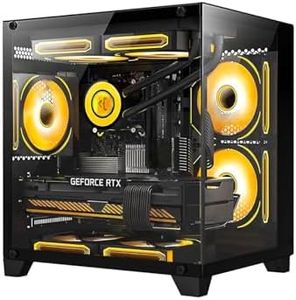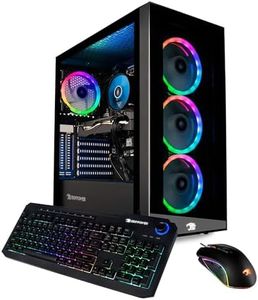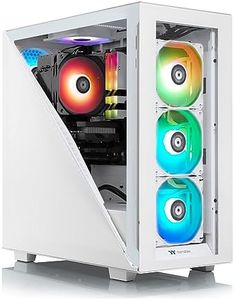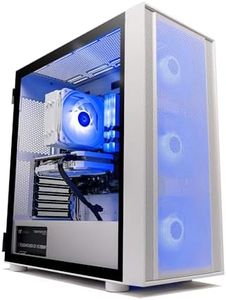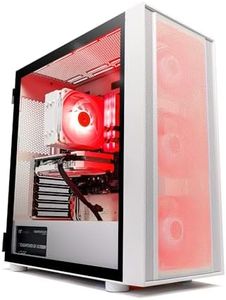We Use CookiesWe use cookies to enhance the security, performance,
functionality and for analytical and promotional activities. By continuing to browse this site you
are agreeing to our privacy policy
10 Best Gaming Desktop
From leading brands and best sellers available on the web.Buying Guide for the Best Gaming Desktop
Buying a gaming desktop is an exciting process, but it can be overwhelming because of all the technical specifications and features to consider. The right gaming desktop for you will depend on the types of games you want to play, how demanding those games are, and whether you’d like your system to be somewhat future-proof. It's important to focus on the key hardware components because these will have the biggest impact on your gaming experience. Always remember to think about what you want to do with your desktop not just today, but down the road as well.Processor (CPU)The processor, or CPU, acts as the brain of your gaming desktop and determines how quickly your computer can handle tasks and run programs. For gaming, faster and more modern CPUs usually mean smoother gameplay and better multitasking. Processors are usually described by the number of 'cores' and their clock speed (GHz). Entry-level processors are fine for light gaming or older titles, whereas mid-range CPUs are suitable for most modern games. High-end CPUs are best for those who want peak performance, use their PC for tasks like video editing, or play highly competitive, CPU-intensive games. Consider the kind of games you play: if you stick to newer, demanding games or want to use your PC for other heavy tasks, go for a mid-range or high-end CPU.
Graphics Card (GPU)The graphics card is one of the most important parts of a gaming desktop because it is responsible for rendering images, animations, and videos. A strong GPU allows for higher resolutions, better graphical effects, and smoother frame rates. Entry-level GPUs work for less demanding or older games, while mid-range cards will handle most current titles at moderate settings. High-end GPUs are necessary for gaming at higher resolutions such as 1440p or 4K, or for using features like ray tracing. Choose a GPU that matches the resolution and graphic settings at which you want to play your games, as well as any interest you have in virtual reality or future games.
Memory (RAM)RAM, or memory, helps your gaming desktop run multiple tasks smoothly by temporarily holding data your system uses actively. Too little RAM can cause slowdowns in both gaming and other software. Most modern games run well with 16GB of RAM, which is a suitable middle ground—8GB may be enough for casual play or older games, while 32GB or more is only necessary for users who stream, run lots of background applications, or do professional multitasking. Think about your gaming habits and whether you want to have a browser, chat, or streaming software running while you play; this will help you decide how much RAM you need.
Storage (SSD/HDD)Storage refers to where your games, files, and the operating system are kept. There are two main types: SSD (solid state drive) and HDD (hard disk drive). SSDs are much faster than HDDs and make games load quicker, as well as making your overall system feel more responsive. Common configurations include a small SSD for your operating system and favorite games, paired with a larger HDD for other files. For speed and convenience, prioritize having at least some SSD storage; larger SSDs will allow you to install more games and apps. Choose the combination that fits your library size and how many games you want installed at once.
Cooling SystemGaming desktops generate heat, especially during long or intense gaming sessions, so a good cooling system ensures your components last longer and your system stays stable. There are air-cooling and liquid-cooling solutions, each with their own pros and cons. Air-cooling is simple and reliable for most gamers, while liquid-cooling can be quieter and cool more effectively, which is advantageous for high-performance setups or overclocking. If you plan on playing graphically demanding games for many hours or modifying your system for even higher performance, consider investing in better cooling.
UpgradabilityUpgradability refers to how easily you can swap or add new hardware to your desktop in the future. Some gaming desktops are designed with easy access and standard parts, making upgrades like adding more RAM, a bigger storage drive, or a new GPU straightforward. If you want your gaming desktop to last several years, look for systems with standard-sized cases and clear pathways for future upgrades. This is especially important if you like staying current with technology or expect your performance needs to change over time.
Connectivity and PortsThe ports and connectivity options on a gaming desktop determine what devices and accessories you can plug in, including monitors, headphones, and controllers. Important ports include USB (for peripherals), HDMI/DisplayPort (for monitors), Ethernet (for stable internet), and audio jacks. Wi-Fi capability is often built in as well. Depending on your needs—such as using multiple monitors, high-speed peripherals, or VR headsets—ensure the desktop offers enough and the right types of ports.

